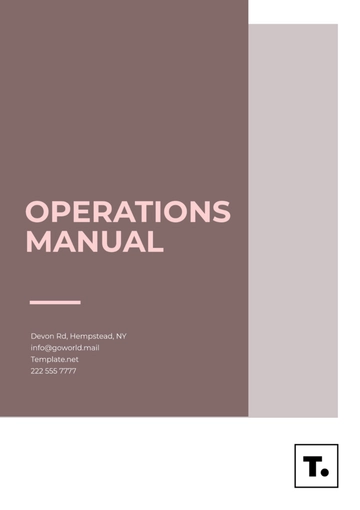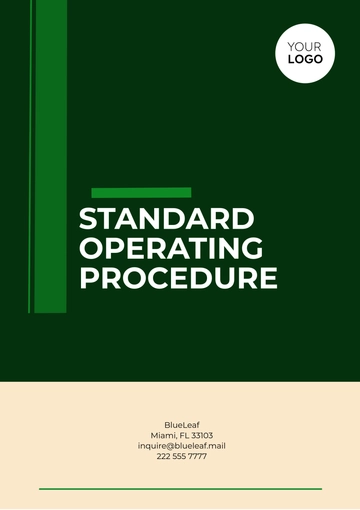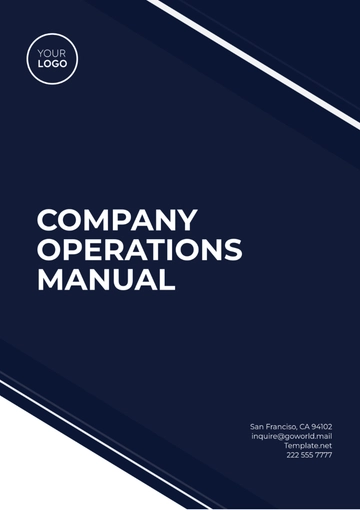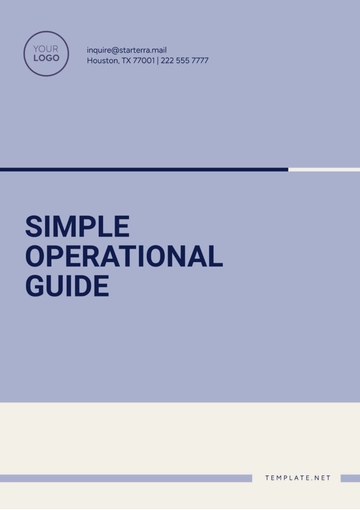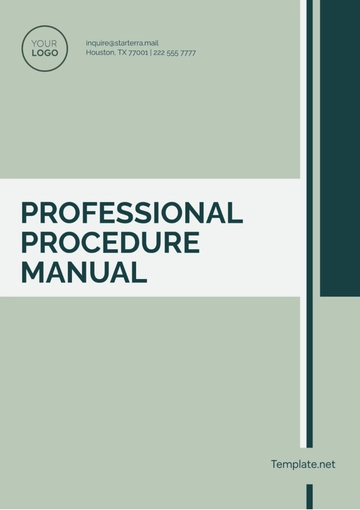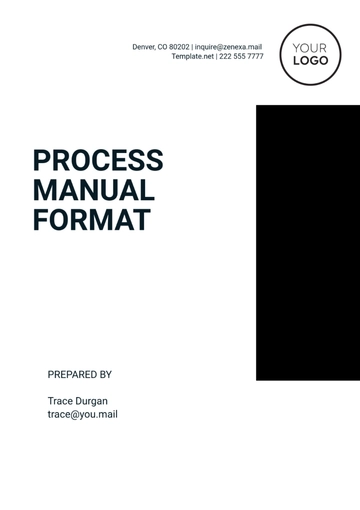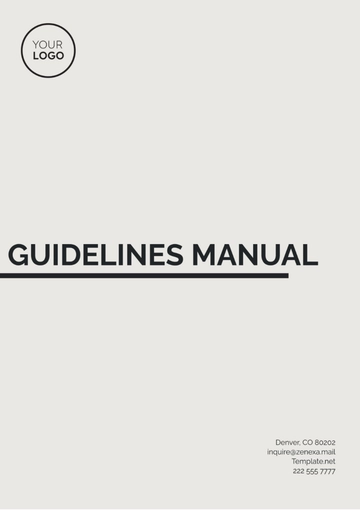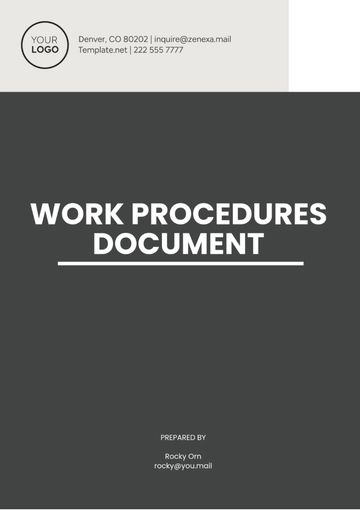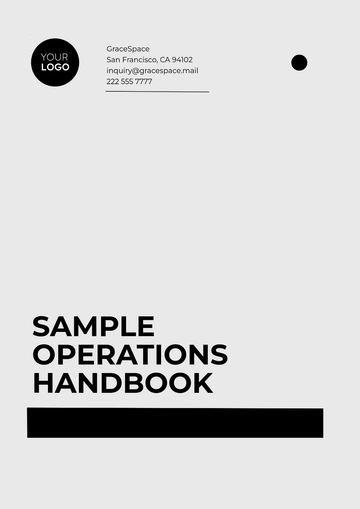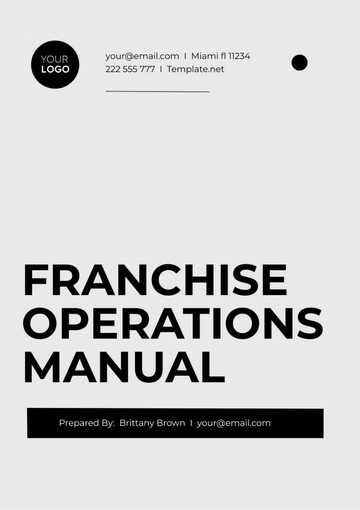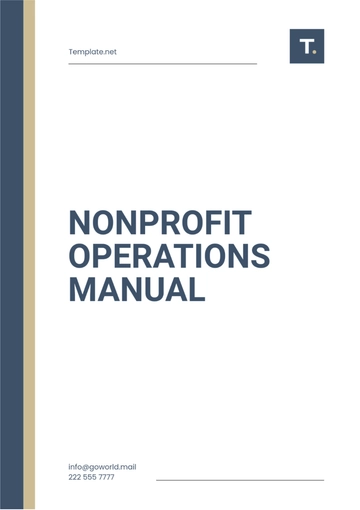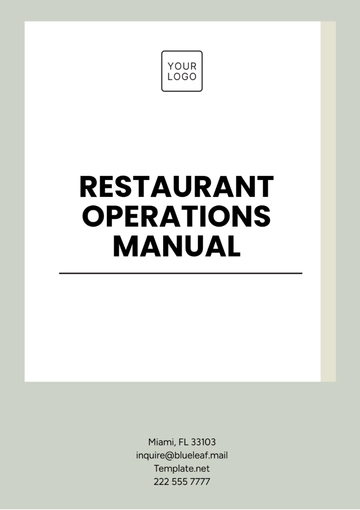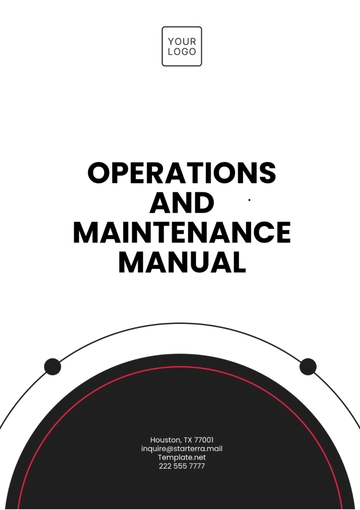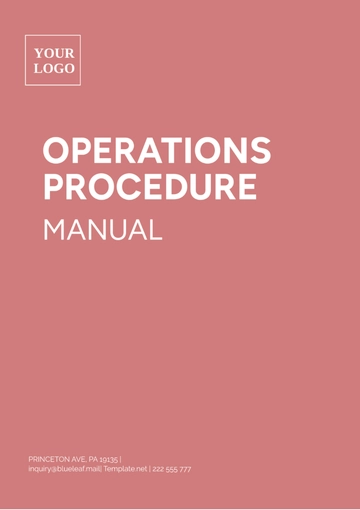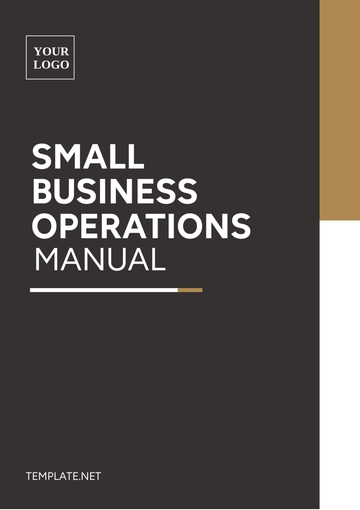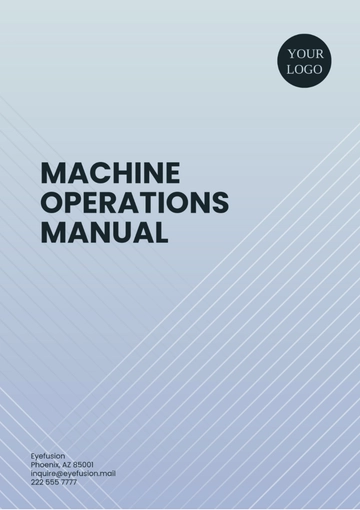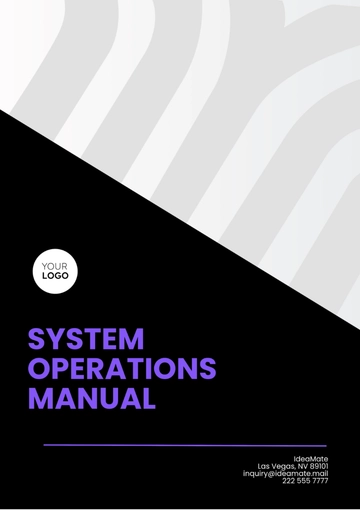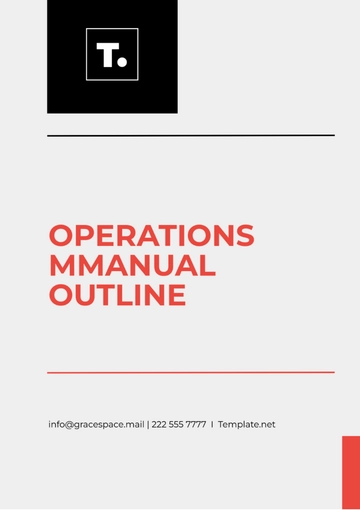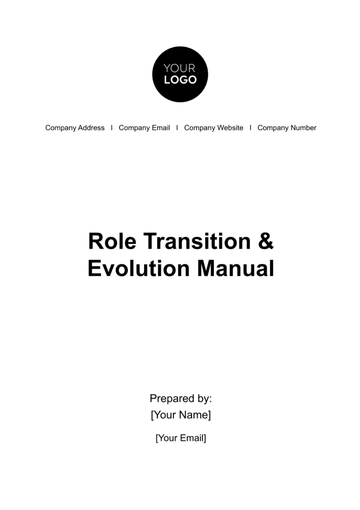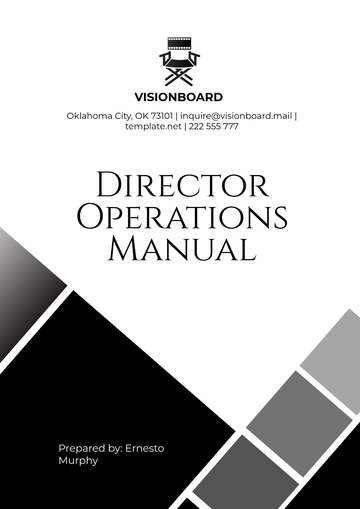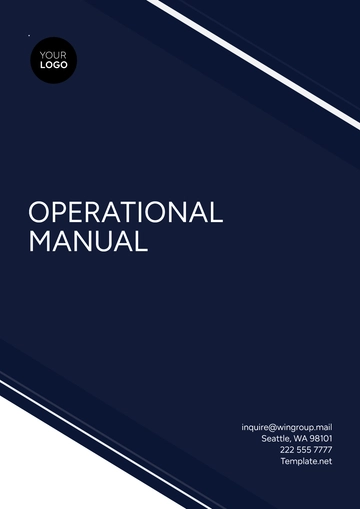Free Advertising Campaign Operations Manual
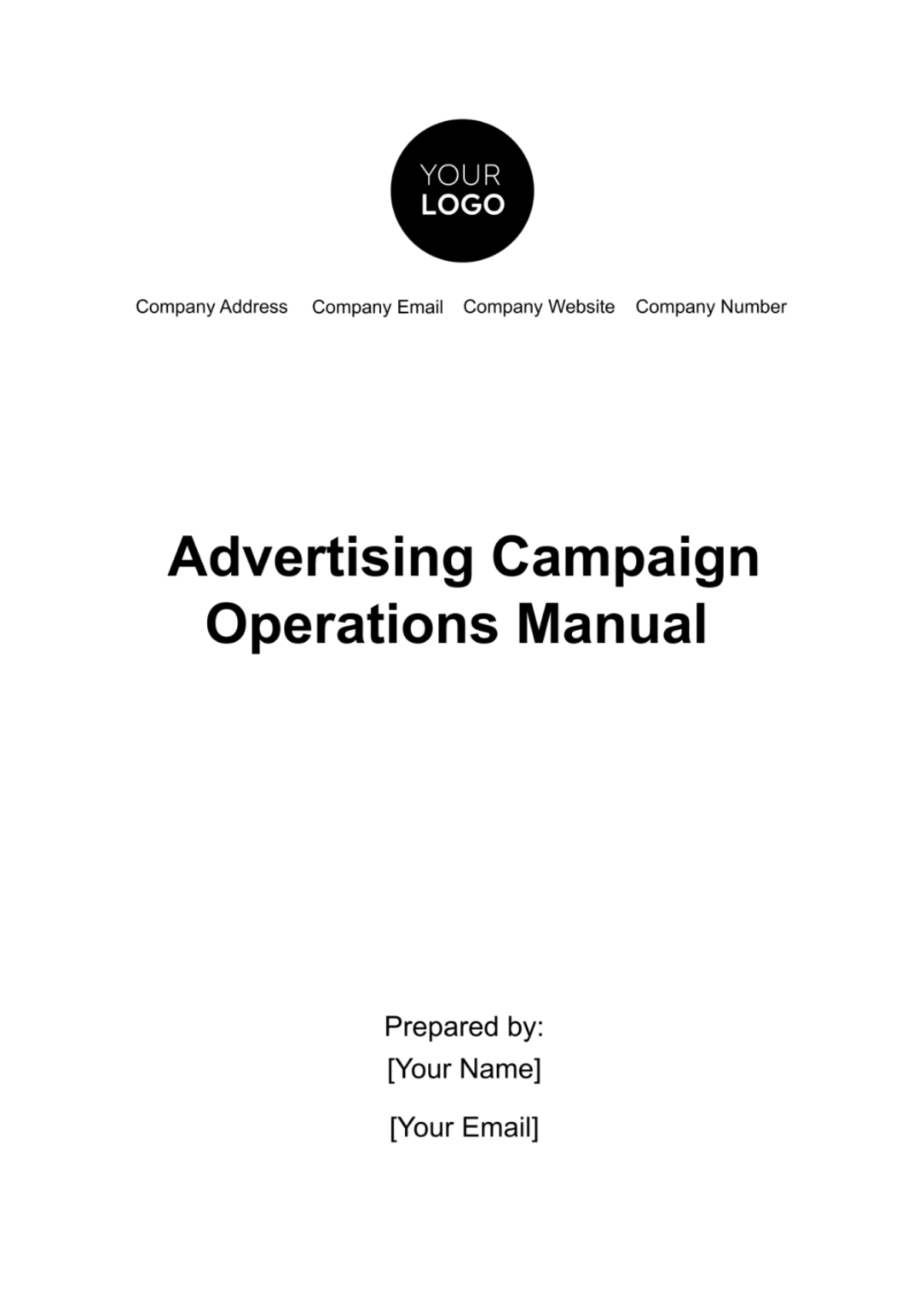
I. Introduction
Purpose
The primary purpose of the Advertising Campaign Operations Manual is to furnish a definitive guide for the meticulous planning, execution, and post-analysis of [Your Company Name]’s advertising campaigns within our esteemed digital technology company. By offering a structured framework, this manual aims to instill a sense of precision and uniformity in the creation of advertising endeavors, cultivating efficiency and effectiveness across diverse campaign initiatives.
Scope
This manual's scope extends comprehensively to encapsulate the entire lifecycle of advertising campaigns, ranging from the strategic formulation of campaign objectives to the intricate post-campaign analysis. It is designed to be an indispensable resource, catering to the diverse needs of advertising managers, creative teams, finance professionals, compliance officers, and analytics experts involved in the multifaceted landscape of advertising operations.
Target Audience
With an audience-centric approach, this manual is meticulously tailored to cater to the unique requirements of various stakeholders, including seasoned advertising managers, creative minds shaping compelling content, financial experts navigating budgetary considerations, vigilant compliance officers ensuring adherence to legal standards, and analytical minds deciphering campaign metrics.
II. Campaign Setup Procedures
Platform Selection
Initiate the campaign journey with a meticulous evaluation of advertising platforms. Scrutinize each platform's suitability based on its alignment with campaign objectives, compatibility with the identified target audience demographics, and relevance of [Your Company Name]’s brand.
Target Audience Definition
Embark on the campaign's foundation by intricately defining the target audience. Employ a nuanced approach that considers not only demographic factors but also delves into the realms of geographic and psychographic intricacies. Gather and utilize the power of data analytics to sculpt a finely tuned understanding of our audience.
Campaign Objectives
Cast a light on the advertising campaign by articulating clear and concise objectives. These objectives should be properly pictured out. Unveil the purpose of the campaign, be it brand amplification, lead generation, or conversion, with an unwavering focus on achieving measurable and impactful outcomes.
Key Performance Indicators (KPIs)
Elevate the campaign's analytical prowess by meticulously defining Key Performance Indicators (KPIs). These metrics are the compass guiding our journey, encompassing critical aspects such as click-through rates, conversion rates, and return on ad spend (ROAS).
III. Ad Creative Guidelines
Dimensions And Formats
Rigorously adhere to platform-specific guidelines for ad dimensions and formats, ensuring meticulous alignment with the unique specifications of each digital channel. Precise compliance with these standards is paramount to guaranteeing optimal visual representation and compatibility across diverse devices and environments.
Content Guidelines
Develop a blend of persuasive copy and visually striking elements that resonate with the target audience's preferences. Maintain consistency in language and imagery, thereby fortifying the brand's identity and creating a lasting impression.
Optimization Strategies
Engage in a continuous cycle of refinement by implementing sophisticated A/B testing methodologies. Iteratively enhance ad creatives based on performance data, meticulously analyzing user interactions to uncover nuanced insights. This iterative optimization process is foundational to ensuring that the advertising content evolves dynamically.
IV. Budgeting And Financial Guidelines
Budget Allocation
Allocate budget strategically across campaigns, considering the potential return on investment (ROI). Balance budget distribution among different platforms and ad types to optimize overall performance. The following table illustrates a recommended budget allocation framework:
Campaign Type | Budget Allocation |
|---|---|
Brand Awareness | 30 |
Lead Generation | 25 |
Sales Conversion | 45 |
Financial Planning
Develop a comprehensive financial plan that outlines anticipated expenses and revenue projections. Regularly review and adjust the plan based on campaign performance. The financial planning process should encompass the following elements:
Element | Details |
|---|---|
Expense Categories | Creative production Ad placement costs Analytics and monitoring tools Contingency fund |
Revenue Projections | Anticipated sales from campaign efforts Potential customer acquisition value Projected return on investment (ROI) |
Budget Review Cadence | Weekly reviews during campaign execution Post-campaign comprehensive review |
Expense Tracking
Implement robust expense tracking mechanisms to monitor spending in real-time. Utilize financial tools and platforms to ensure adherence to budgetary constraints. The following steps outline an effective expense tracking process:
Real-Time Tracking Tools
Utilize financial software for real-time tracking
Set up automated alerts for budget thresholds
Regular Expense Audits
Conduct weekly expense audits
Verify expenditure against budget allocations
Budget Optimization Strategies
Employ data-driven strategies to optimize budget allocation during the campaign. Shift resources toward high-performing channels and adjust budgets based on real-time analytics. The following strategies facilitate effective budget optimization:
Continuous Monitoring
Monitor campaign performance in real-time
Identify underperforming channels promptly
A/B Testing For Efficiency
Allocate budget based on A/B testing results
Direct resources towards variants with higher conversion rates
Dynamic Budget Adjustments
Adjust budgets dynamically based on performance trends
Allocate additional budget to capitalize on successful ad placements
V. Ad Placement And Scheduling Protocols
Channel Selection
Thoroughly evaluate and strategically select advertising channels based on a comprehensive understanding of the target audience's online behavior. Consider platforms such as social media, search engines, and display networks, ensuring alignment with campaign objectives and audience demographics.
Platform Considerations
Tailor ad creatives and messaging to seamlessly integrate with the unique characteristics of each selected platform. Pay meticulous attention to the intricacies of ad placement options, leveraging platform-specific features to enhance visibility and engagement.
VI. Monitoring And Analytics Procedures
Real-Time Monitoring
Implement a strong real-time monitoring system using advanced analytics dashboards to track key performance indicators (KPIs) throughout the campaign lifecycle. Develop a dynamic interface that enables stakeholders to visualize data trends, campaign progress, and critical metrics in real-time. Ensure that any deviations from established benchmarks trigger immediate alerts for swift corrective actions.
Key Metrics
Utilize a comprehensive set of key metrics for in-depth campaign analysis. Below is an illustrative table highlighting essential metrics and their significance:
Metric | Description | Significance |
|---|---|---|
Click-Through Rate (CTR) | Ratio of clicks to impressions | Measures ad engagement and relevance |
Conversion Rate | Percentage of conversions from clicks | Indicates effectiveness in driving desired actions |
Cost per Click (CPC) | Cost incurred per click | Evaluates efficiency in acquiring clicks |
Return on Ad Spend (ROAS) | Revenue generated per ad spend | Assesses the financial impact of the campaign |
Impressions | Number of times an ad is displayed | Measures the reach and visibility of the campaign |
Data-Driven Decision Making
Create a culture of data-driven decision-making by conducting regular review sessions leveraging the insights gleaned from analytics reports. Establish a decision pattern that aligns identified trends with predefined action plans. Utilize visualizations and trend analyses to guide strategic adjustments, ensuring that modifications are anchored in empirical evidence rather than intuition.
VII. Troubleshooting And Issue Resolution
Common Issues
Thoroughly catalog common issues that may arise during advertising campaigns, including but not limited to technical anomalies, data discrepancies, and performance fluctuations. Provide concise descriptions and root cause analyses for each issue.
Technical Glitches
Establish a durable framework for the prompt identification and resolution of technical glitches. Collaborate closely with the technical teams, delineating clear communication channels and escalation procedures to ensure swift remediation.
Discrepancy Resolution
Implement a meticulous approach to resolving discrepancies in reporting. Conduct regular audits to verify data accuracy, and establish a streamlined process for rectifying any disparities with advertising platforms. Maintain transparent communication with stakeholders throughout the resolution process.
Unforeseen Challenges
Proactively identify potential challenges that may arise unexpectedly during campaign execution. Develop comprehensive contingency plans, outlining precise steps for mitigating risks and ensuring the uninterrupted flow of campaign operations. Regularly update these plans based on evolving insights and emerging industry trends.
VIII. Compliance And Regulatory Considerations
Legal Requirements
Thoroughly comprehend and meticulously adhere to the intricate web of legal requirements that govern advertising practices. Develop an exhaustive documentation of compliance measures, ensuring a proactive stance in adapting to dynamic regulatory landscapes. Regularly review and update protocols in response to legislative changes, fostering a culture of legal diligence within the advertising sphere.
Industry-Specific Standards
Maintain a vigilant awareness of ever-evolving industry-specific advertising standards and guidelines. Build up a commitment to ethical advertising practices by ensuring alignment with prevailing industry norms. Uphold a posture of continuous improvement, incorporating emerging standards in order to sustain relevance and credibility.
IX. Post-Campaign Analysis And Reporting
Analysis Procedures
Conduct an exhaustive post-campaign analysis, employing a meticulous approach to dissect the intricacies of the campaign's performance against predefined objectives. Utilize advanced analytical tools and methodologies to extract granular insights, scrutinizing key performance indicators with a discerning eye.
Key Insights
Delve deep into the data analytics, distilling not only the numerical metrics but also extracting nuanced qualitative insights. Unearth the underlying trends, patterns, and correlations that provide a comprehensive understanding of audience behavior, campaign efficacy, and market dynamics.
Lessons Learned
Synthesize a handbook of lessons learned, cover both triumphs and challenges encountered during the campaign lifecycle. Illuminate the intricacies of successful strategies, dissecting the contributing factors, and scrutinize areas for refinement, culminating in a reservoir of actionable knowledge for future endeavors.
Recommendations For Future Campaigns
Articulate precise and data-backed recommendations that transcend generic advice. Leverage the post-campaign analysis to craft a strategic roadmap, delineating actionable steps for refining targeting strategies, optimizing creative elements, and fine-tuning budget allocations. Elevate the discourse beyond mere observations, providing a roadmap for continuous improvement and sustained success in future advertising initiatives.
- 100% Customizable, free editor
- Access 1 Million+ Templates, photo’s & graphics
- Download or share as a template
- Click and replace photos, graphics, text, backgrounds
- Resize, crop, AI write & more
- Access advanced editor
Introducing the Advertising Campaign Operations Manual Template by Template.net – a meticulously crafted document that streamlines and guides the intricate processes of campaign operations. This comprehensive template is now customizable and editable using an Ai Editor Tool ensures precision in executing advertising strategies, offering a detailed roadmap for seamless coordination. Elevate your campaigns with a structured approach using this indispensable resource.
